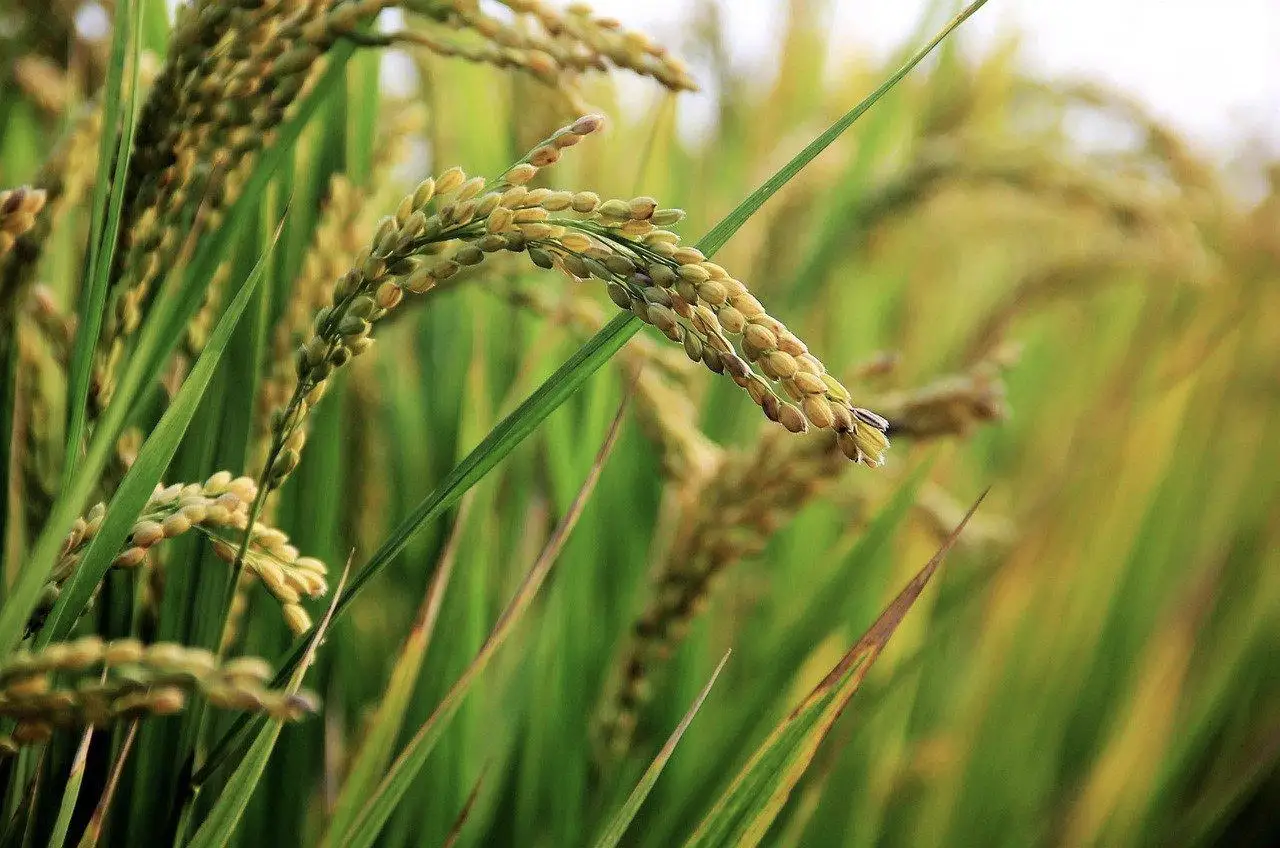The two OsRALF peptides are essential for pollen tube germination and elongation, a vital step in the fertilization of rice crops.
Rapid alkalinization factors (RALFs) are required for pollen tube germination and elongation, an essential process in plant fertilization. But their role in monocot plants remains unexplored. In a new study, scientists from Korea have identified OsRALF17 and OsRALF19 in rice and determined their functions in pollen tube germination and growth. This study provides novel insights into the role of RALFs in rice fertilization, paving the way for enhanced grain yield.
Double fertilization is a complex mechanism in flowering plants, wherein two sperm cells fuse with the embryo sac. To achieve this, pollens released from anthers must interact with the plant’s stigma, hydrate, and germinate into pollen tubes. Thus, pollen tube germination and elongation are crucial for double fertilization, which, in turn, influences the grain yield of crop plants.
The fertilization process requires peptide hormones called rapid alkalinization factors (RALFs), which are involved in signal transduction. Studies have shown that RALFs play an important role in pollen tube growth. However, their role in monocot plants like rice remains unexplored.
Now, a team of researchers from Korea, led by Assistant Professor Yu-Jin Kim from the Department of Life Science and Environmental Biochemistry at Pusan National University, including Ph. D. student Eui-Jung Kim from Kyung Hee University, has identified and characterized two RALF peptides in rice (Oryza sativa). Their research was made available online in the Journal of Integrative Plant Biology.
The team analyzed protein sequences from the Rice Genome Annotation Project database and identified 41 RALF genes. Among them, OsRALF17 and OsRALF19 were expressed in high amounts in pollen and pollen tubes specifically. The researchers characterized their corresponding peptides using multiple clustered regularly interspaced palindromic repeats (CRISPR)/CRISPR-associated protein 9(Cas9) system. They generated knockout mutants in which one or both pollen-specific RALF genes were not expressed. The lack of OsRALF17 and OsRALF19 expression caused near-total male sterility in rice with defects in pollen hydration, germination, and tube growth, indicating their critical importance in male reproduction and seed production. Interestingly, when synthetic OsRALF17 and OsRALF19 peptides were applied exogenously to the knockout mutants, they reversed some of their fertility defects.
Explaining the real-life applications of RALFs, Dr. Kim says: “RALF peptides can control fertilization in plants by acting as natural chemical hormones and bio-controllers.” To test the potential of exogenous OsRALFs as bio-controllers, the team added the two peptides at low concentrations to normal rice plants, which enhanced the pollen tube elongation. In addition, the effect seemed to be dose-dependent because the OsRALFs inhibited pollen tube germination and growth at higher concentrations. Therefore, OsRALFs could control the balance of tube growth.
Lastly, the researchers conducted transcriptomic and proteomic experiments to understand the mechanism of action of OsRALF17 and OsRALF19. They found that both peptides bind to a protein receptor called Oryza sativa male-gene transfer defective 2 (OsMTD2) and transmit signals via reactive oxygen species, which facilitates pollen tube germination and maintains integrity in rice.
This study provides novel insights into the role of RALFs and OsMTD2 in the fertilization of rice plants, potentially benefiting agriculture. “Rice is one of the most important food crops, and global climate change necessitates new gene resources and cultivars for better crop production. As development of new cultivars requires male sterile lines, controlling male fertility via RALF peptides or RALF mutant lines could be helpful for crop breeding. In addition, useful gene resources from rice could be applied to other crop plants,” concludes Dr. Kim.
Here’s hoping for better grain yield to achieve zero hunger!
Read the paper: Journal of Integrative Plant Biology
Article source: Pusan National University
Author: 이제은 / [연구진흥과]
Image credit:






